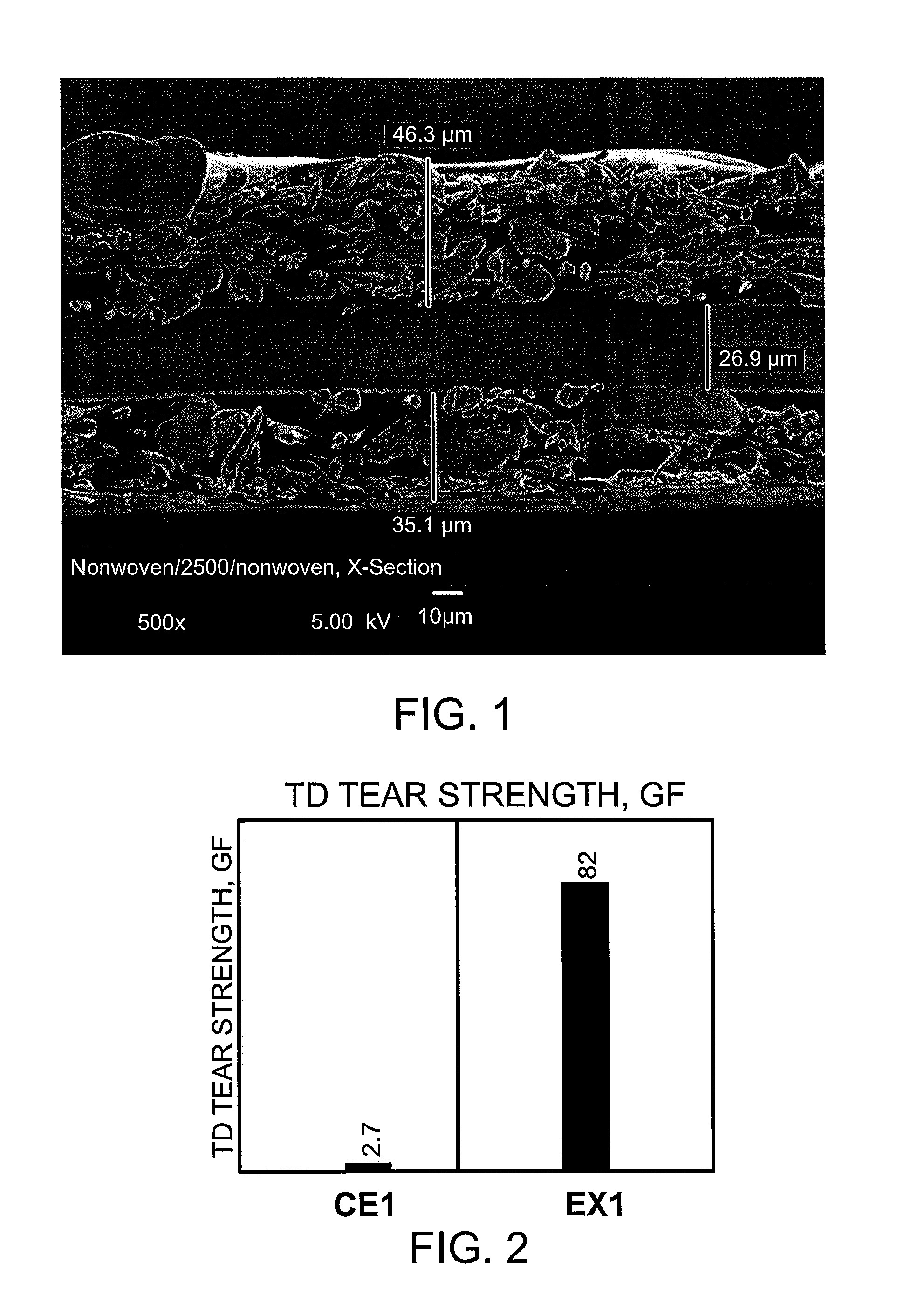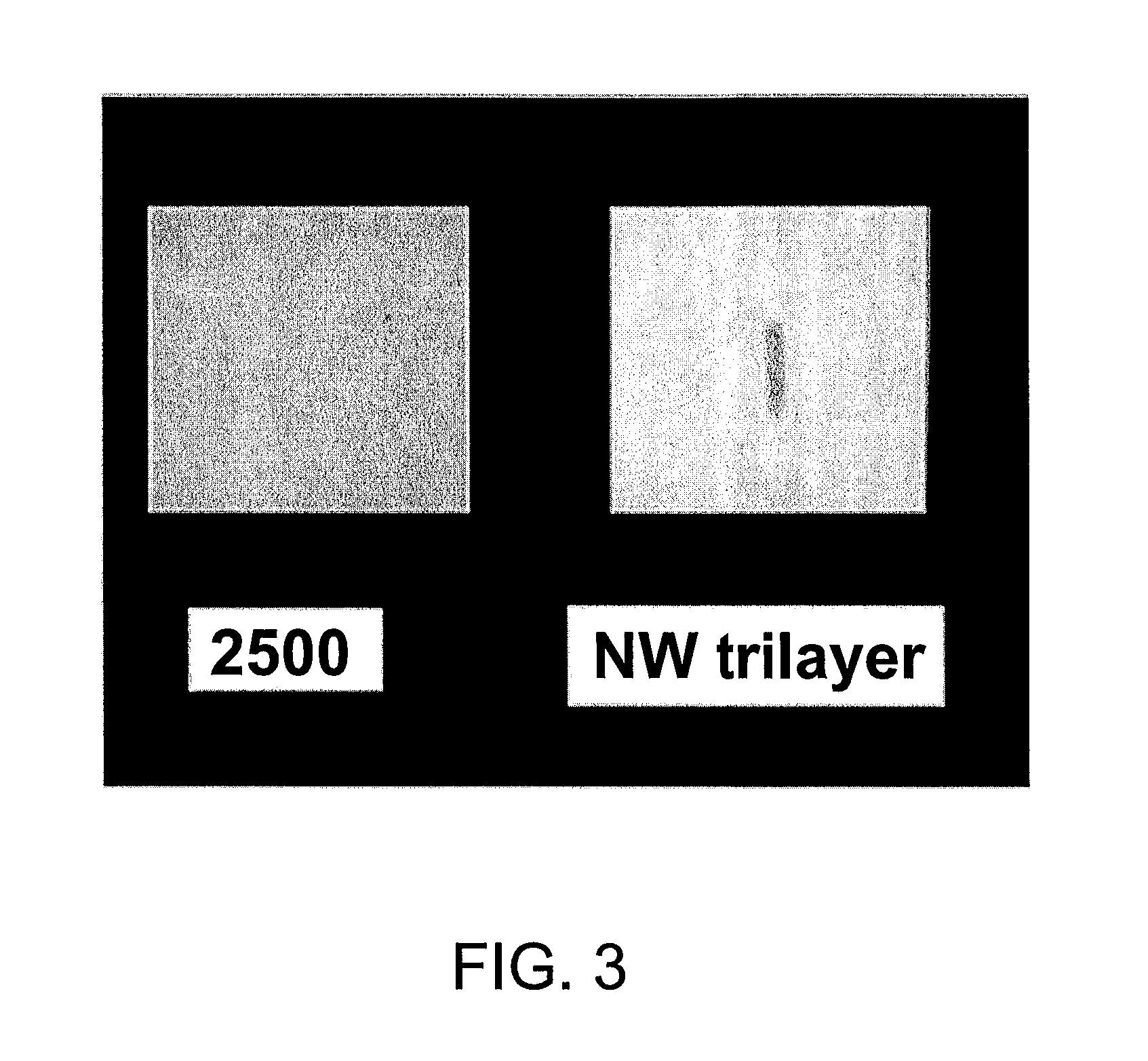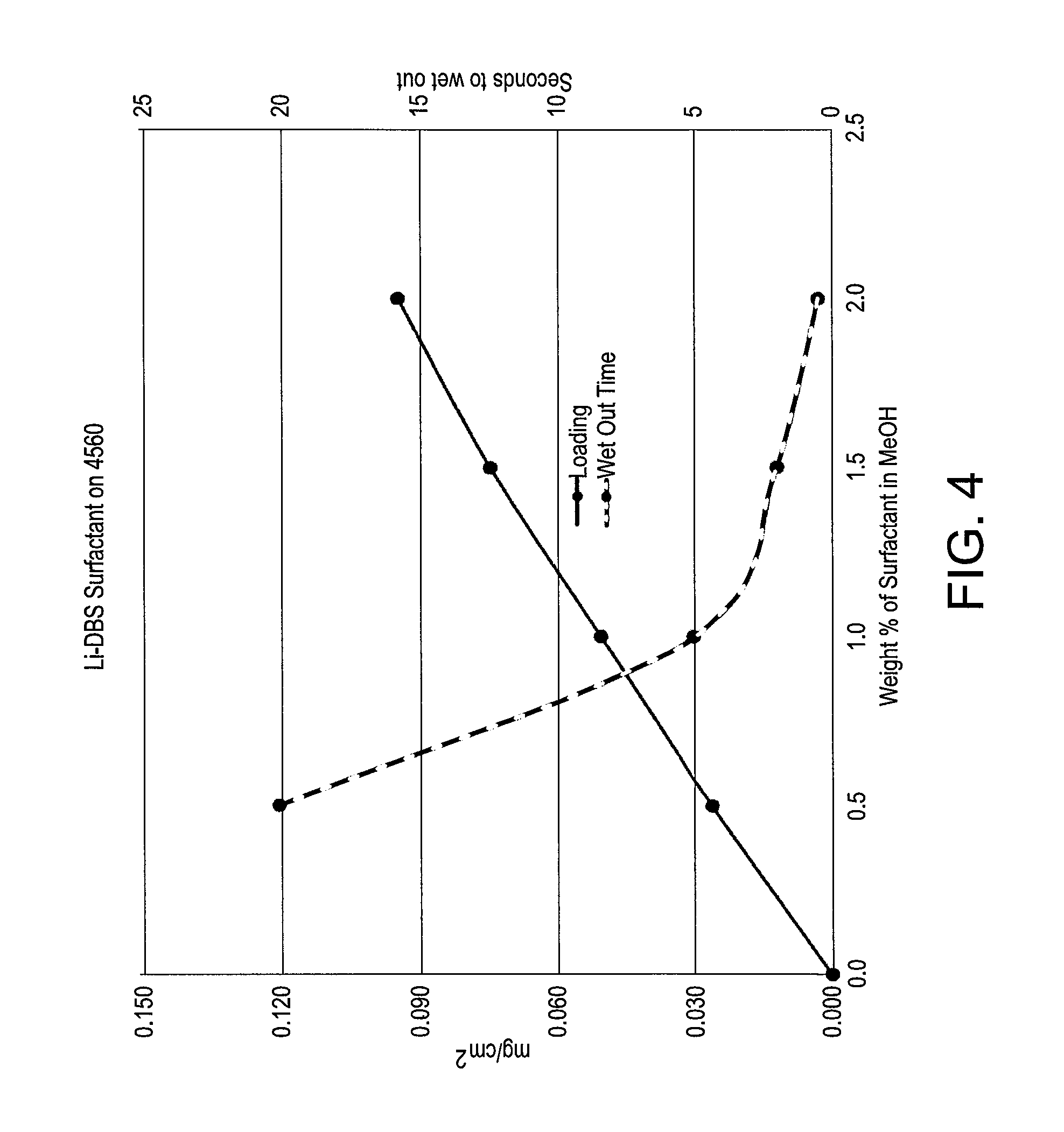Coated or treated microporous battery separators, rechargeable lithium batteries, systems, and related methods of manufacture and/or use
a technology of rechargeable lithium batteries and microporous batteries, which is applied in the field of coating or treating microporous battery separators, rechargeable lithium batteries, systems, and related methods of manufacture and/or use, can solve the problems of poor wettability and electrolyte retention of electrolytes containing a high content of polar solvents, and achieve the optimization of the charging capacity of lithium ion batteries, enhance the wetting speed and wetting capacity, and improve the wettability
- Summary
- Abstract
- Description
- Claims
- Application Information
AI Technical Summary
Benefits of technology
Problems solved by technology
Method used
Image
Examples
example 1
NW / PO / NW Separator (No Surfactant)
[0044]A trilayer separator was made by laminating a 60 μm thick PP non-woven layer to each side of a Celgard® 2500 polypropylene separator using silicon heated (surface temp 240° F.) and smooth metal heated (surface temp 250° F.) rolls. The two 60 μm PP non-woven layers were combined with the 25 μm thick microporous Celgard 2500 membrane under 50 psi to produce a 104 μm trilayer separator.
[0045]FIG. 1 shows an example of a non-woven / membrane / non-woven trilayer separator. The outer layers of the separator are 46.3 μm and 35.1 μm with a polypropylene inner layer of 26.9 μm. The lamination of two non-woven layers to the outside of the polyolefin layer improves separator performance relative to similar polyolefins not containing a non-woven layer. The sandwich separator has improved wettability from 34 to 38 dynes / cm, shown in FIG. 3. The sandwich separator has decreased shrinkage and increased TD tear strength (see FIG. 2 and Table 3). The sandwich sep...
example 2
Surfactant Treated Separator
[0046]In this Example, the Control Example (CE1) was commercially available Celgard®4560 separator (no surfactant, one side nonwoven). Celgard®4560 is a 110 μm thick microporous composite separator consisting of a Celgard®2500 polypropylene membrane (Celgard® 2500 is a 25 μm thick monolayer polypropylene membrane) laminated to a 85 μm thick polypropylene nonwoven layer (nonwoven on one side only, no surfactant). For the inventive Examples, various coatings having varying weight percent add-on levels and varying coating surface densities, as well as varying weight percent of the surfactant in the methanol-containing coating solution, were applied to samples of the Celgard®4560 composite separator. Specifically, the samples were coated with various solutions of lithium 4-dodecylbenzenesulfonate surfactant (LiDBS) in methanol at varying concentrations. Table 4 lists coating data for Examples 1-4 which were coated with a solution of lithium 4-dodecylbenzenesu...
example 3
Battery Capacity of Surfactant Treated Separator
[0051]In this Example, a sample of a Celgard® monolayer polypropylene membrane of about 20 microns in thickness was coated according to embodiments discussed herein with a solution of the lithium 4-dodecylbenzenesulfonate surfactant (LiDBS).
[0052]FIG. 5 demonstrates the capacity of the battery versus the number of cycles for the inventive surfactant coated Celgard® separator in a lithium iron phosphate (LiFePO4) battery versus an uncoated sample of the same Celgard® monolayer polypropylene separator membrane of about 20 microns thickness. FIG. 5 shows a clearly evident trend of improved battery capacity (by reducing capacity fade) for the inventive surfactant coated separator in contrast to the untreated or uncoated separator which shows decreasing battery capacity and more capacity fade. The decrease in battery capacity by the untreated membrane which would continue to decrease at higher number of cycles may be undesirable.
[0053]In ac...
PUM
| Property | Measurement | Unit |
|---|---|---|
| melting point | aaaaa | aaaaa |
| total thickness | aaaaa | aaaaa |
| total thickness | aaaaa | aaaaa |
Abstract
Description
Claims
Application Information
 Login to View More
Login to View More - R&D
- Intellectual Property
- Life Sciences
- Materials
- Tech Scout
- Unparalleled Data Quality
- Higher Quality Content
- 60% Fewer Hallucinations
Browse by: Latest US Patents, China's latest patents, Technical Efficacy Thesaurus, Application Domain, Technology Topic, Popular Technical Reports.
© 2025 PatSnap. All rights reserved.Legal|Privacy policy|Modern Slavery Act Transparency Statement|Sitemap|About US| Contact US: help@patsnap.com



